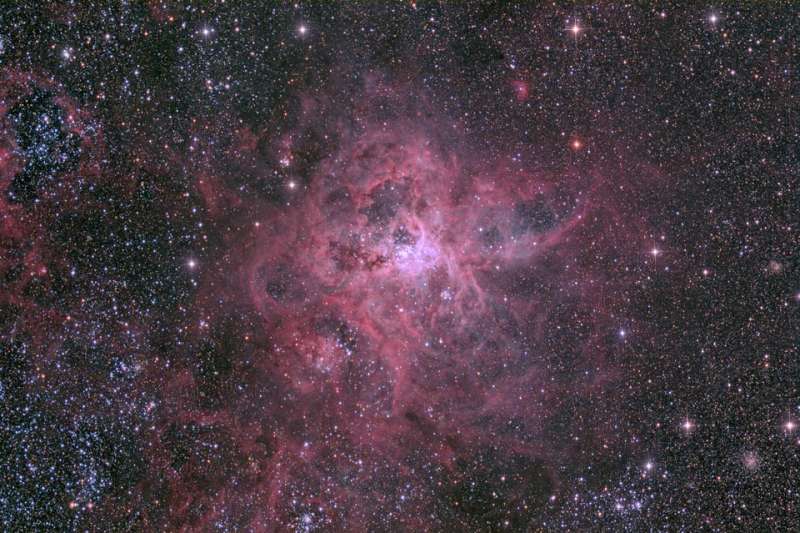Credit & Copyright: Damian Peach
Explanation:
It is the largest and most complex star forming region in the entire galactic neighborhood.
Located in the
Large Magellanic Cloud, a small satellite galaxy orbiting
our Milky Way galaxy,
the region's
spidery appearance is responsible for its popular name, the Tarantula
nebula.
This tarantula, however, is about 1,000
light-years across.
Were it placed at the distance of Milky Way's
Orion Nebula,
only 1,500 light-years distant and the nearest stellar nursery to Earth, it
would appear to cover about 30 degrees
(60 full moons) on the sky.
Intriguing details of the nebula are visible in
the above image shown in
near true colors.
The spindly arms of the
Tarantula nebula
surround
NGC 2070, a
star cluster that contains some of the brightest,
most massive stars known,
visible in blue on the right.
Since massive stars
live fast and die young,
it is not so surprising that
the cosmic Tarantula
also lies near the site of a close
recent supernova.
1999 2000 2001 2002 2003 2004 2005 2006 2007 2008 2009 2010 2011 2012 2013 2014 2015 2016 2017 2018 2019 2020 2021 2022 2023 2024 2025 |
Январь Февраль Март Апрель Май Июнь Июль Август Сентябрь Октябрь Ноябрь Декабрь |
NASA Web Site Statements, Warnings, and Disclaimers
NASA Official: Jay Norris. Specific rights apply.
A service of: LHEA at NASA / GSFC
& Michigan Tech. U.
|
Публикации с ключевыми словами:
Tarantula Nebula - LMC - star formation - Туманность Тарантул - БМО
Публикации со словами: Tarantula Nebula - LMC - star formation - Туманность Тарантул - БМО | |
См. также:
Все публикации на ту же тему >> | |
